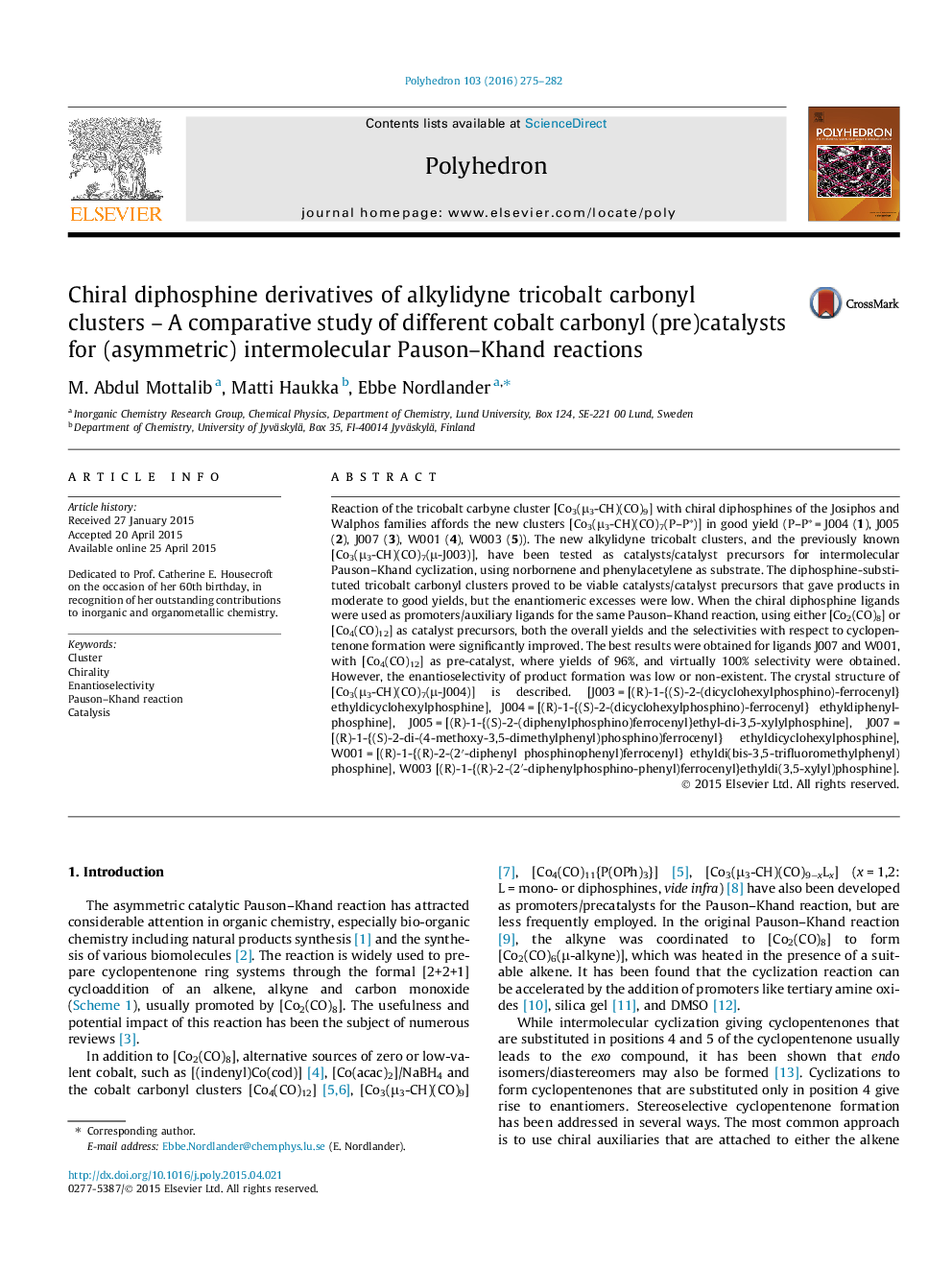| Article ID | Journal | Published Year | Pages | File Type |
|---|---|---|---|---|
| 1334325 | Polyhedron | 2016 | 8 Pages |
Reaction of the tricobalt carbyne cluster [Co3(μ3-CH)(CO)9] with chiral diphosphines of the Josiphos and Walphos families affords the new clusters [Co3(μ3-CH)(CO)7(P–P∗)] in good yield (P–P∗ = J004 (1), J005 (2), J007 (3), W001 (4), W003 (5)). The new alkylidyne tricobalt clusters, and the previously known [Co3(μ3-CH)(CO)7(μ-J003)], have been tested as catalysts/catalyst precursors for intermolecular Pauson–Khand cyclization, using norbornene and phenylacetylene as substrate. The diphosphine-substituted tricobalt carbonyl clusters proved to be viable catalysts/catalyst precursors that gave products in moderate to good yields, but the enantiomeric excesses were low. When the chiral diphosphine ligands were used as promoters/auxiliary ligands for the same Pauson–Khand reaction, using either [Co2(CO)8] or [Co4(CO)12] as catalyst precursors, both the overall yields and the selectivities with respect to cyclopentenone formation were significantly improved. The best results were obtained for ligands J007 and W001, with [Co4(CO)12] as pre-catalyst, where yields of 96%, and virtually 100% selectivity were obtained. However, the enantioselectivity of product formation was low or non-existent. The crystal structure of [Co3(μ3-CH)(CO)7(μ-J004)] is described. [J003 = [(R)-1-{(S)-2-(dicyclohexylphosphino)-ferrocenyl} ethyldicyclohexylphosphine], J004 = [(R)-1-{(S)-2-(dicyclohexylphosphino)-ferrocenyl} ethyldiphenylphosphine], J005 = [(R)-1-{(S)-2-(diphenylphosphino)ferrocenyl}ethyl-di-3,5-xylylphosphine], J007 = [(R)-1-{(S)-2-di-(4-methoxy-3,5-dimethylphenyl)phosphino)ferrocenyl} ethyldicyclohexylphosphine], W001 = [(R)-1-{(R)-2-(2′-diphenyl phosphinophenyl)ferrocenyl} ethyldi(bis-3,5-trifluoromethylphenyl)phosphine], W003 [(R)-1-{(R)-2-(2′-diphenylphosphino-phenyl)ferrocenyl}ethyldi(3,5-xylyl)phosphine].
Graphical abstractCatalytic systems based on either (i) [Co3(μ3-CH)(CO)7(P–P∗)] (P–P∗ = chiral diphosphine) or (ii) [Co2(CO)8], with P–P∗ added as a promoter, or (iii) [Co4(CO)12] + P–P∗, have been assessed for the ability to effect intermolecular Pauson–Khand reactions.Figure optionsDownload full-size imageDownload as PowerPoint slide
